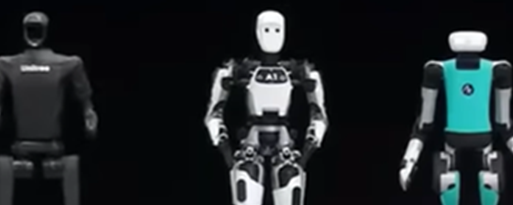The integration of humanoid robots into daily life marks a transformative era in the annals of human achievement, revolutionizing the landscape of labor and personal assistance. These robots, designed to mimic human appearance and actions, are not mere figments of science fiction but tangible innovations reshaping our interaction with technology. This article delves into the pivotal role of humanoid robotics in performing unsafe, repetitive, or mundane tasks, spotlighting the technology’s capabilities and the societal implications of its widespread adoption.

The Genesis of Humanoid Robotics
Humanoid robotics has evolved from rudimentary mechanical contraptions to sophisticated machines capable of emulating human behaviors. This journey began with the ambition to create tools that could extend human capabilities and safeguard well-being. Today, these robots integrate advanced artificial intelligence (AI), robotics, and computer vision technologies, enabling them to perceive their environment, make decisions, and interact with humans and objects in a nuanced manner.

Capabilities and Innovations
Modern humanoid robots are equipped with an array of sensors and actuators, allowing them to navigate complex environments, recognize objects and people, and perform tasks with precision. They are programmed to learn from interactions and improve their performance over time, adapting to new challenges and environments. Innovations in this field have led to robots capable of executing tasks ranging from assembly line work to providing companionship and care for the elderly and disabled.

Application Areas
The deployment of humanoid robots has become increasingly prevalent in sectors where human safety is at risk, such as in hazardous material handling, deep-sea and space exploration, and disaster response. Moreover, these robots are transforming industries reliant on repetitive tasks, such as manufacturing, logistics, and even retail, by offering solutions that enhance efficiency, reduce human error, and cut down operational costs.
In the realm of personal assistance, humanoid robots are making significant strides. They assist with household chores, offer educational support, and provide companionship, addressing the needs of a diverse range of users. This not only alleviates the burden of mundane tasks but also enriches the quality of life, especially for those requiring special care.

Ethical Considerations and Societal Impact
The rise of humanoid robots raises pertinent ethical questions and societal concerns. The potential displacement of human labor by robots is a contentious issue, prompting debates on economic restructuring and the future of work. There’s a growing need for policies that address retraining programs for displaced workers and the equitable distribution of the benefits brought by robotic automation.
Moreover, the integration of robots into personal and professional spheres necessitates robust privacy and security measures to protect against data breaches and misuse. The development of ethical guidelines governing robot behavior and interaction with humans is imperative to ensure that these technologies augment human life without compromising dignity or autonomy.

Conclusion
The embedding of humanoid robotics in daily life is a testament to human ingenuity, offering unprecedented opportunities to enhance efficiency, safety, and quality of life. As we stand on the brink of this robotic renaissance, it is crucial to navigate the challenges and opportunities with foresight, ensuring that the benefits of humanoid robotics are accessible to all, while safeguarding the societal values we hold dear. The journey towards a future where robots and humans coexist in harmony requires a collaborative effort, blending technological innovation with ethical stewardship and societal engagement.










